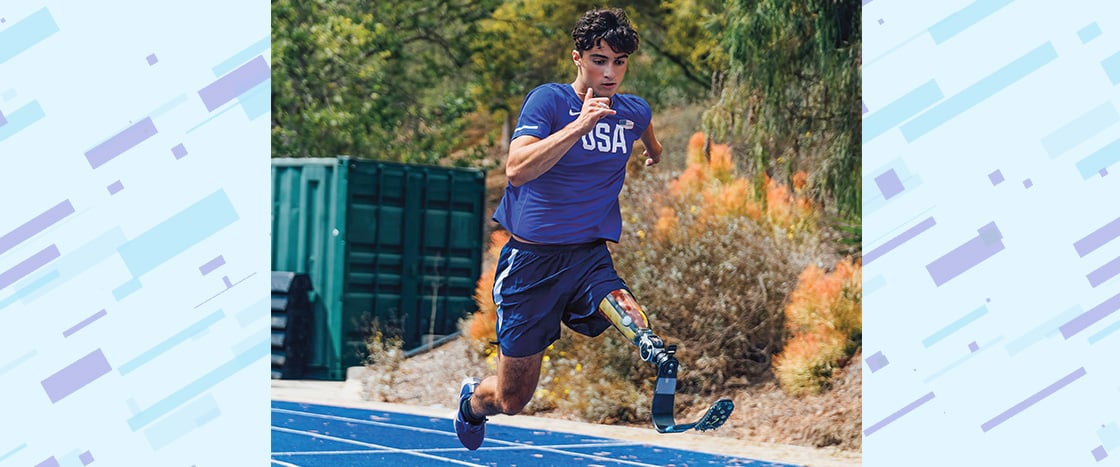Ezra Frech ran with all his might. His powerful legs pushed him forward. One leg was flesh, muscle, and bone. The other was made of a material stronger than steel.
It was August 31, 2021, and the 16-year-old was at the Paralympic Games in Tokyo, Japan. The Paralympics are where the world’s top athletes with physical disabilities come together to compete.
For years, Ezra had dreamed of winning a medal there. He’d trained so hard his body had nearly broken down. This was the moment he’d been waiting for. Ezra ran faster. His heart pounded. His muscles screamed.
Would his dream come true?
Ezra Frech ran as fast as he could. His powerful legs pushed him forward. One leg was flesh, muscle, and bone. The other was made of a material stronger than steel.
It was 2021, and the 16-year-old was at the Paralympic Games in Tokyo, Japan. The Paralympics are where the world’s best athletes with physical disabilities compete.
For years, Ezra had dreamed of winning there. He’d trained so hard his body had nearly broken down. This was the moment he’d been waiting for. Ezra pushed himself to run faster.
Would his dream come true?

